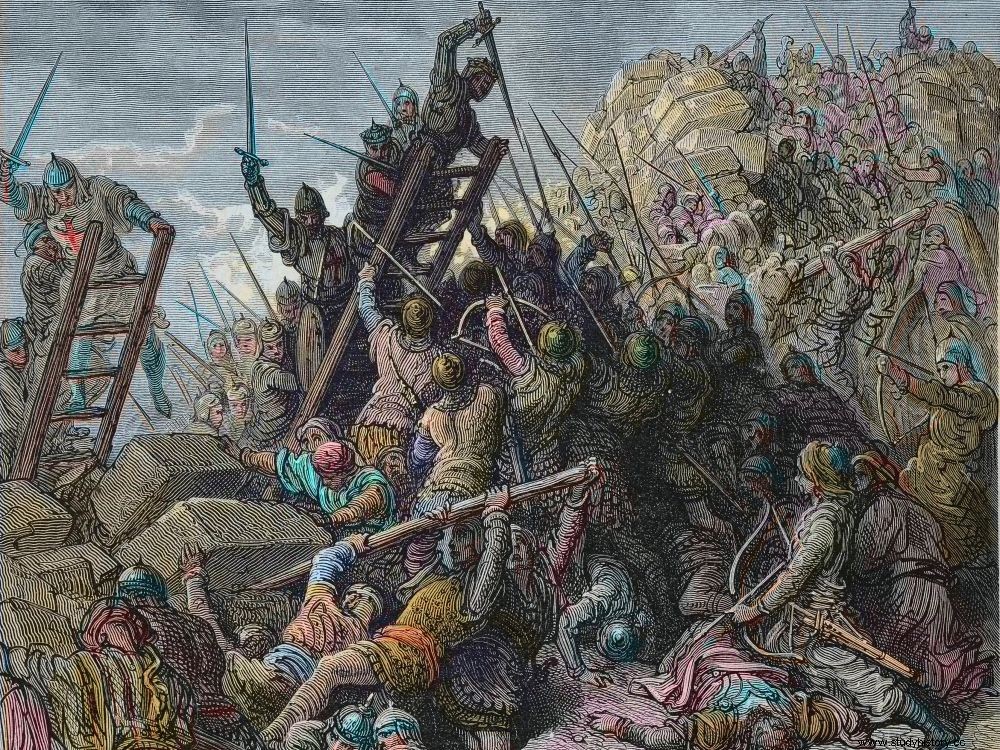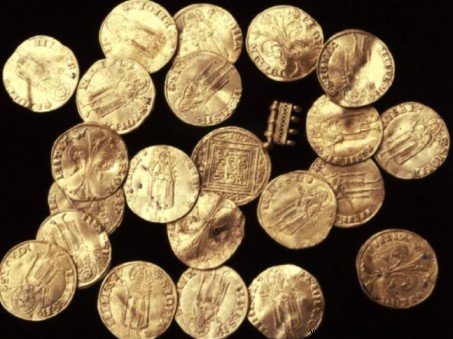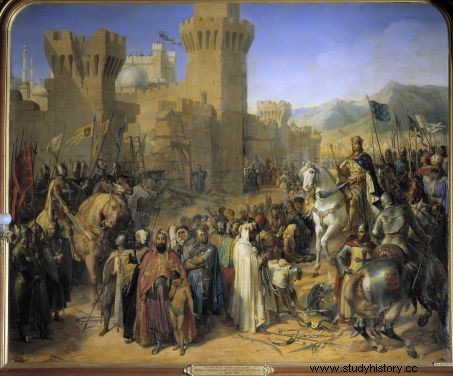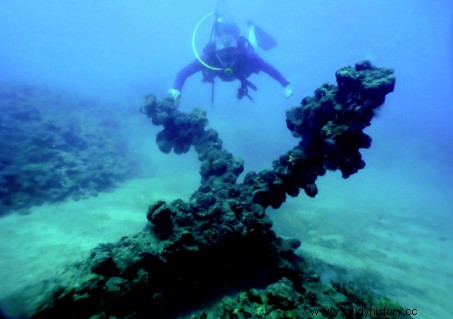A 13 th wreck century was unearthed in the bay of St John of Acre, on the northern coast of Israel. It could be a Crusader ship sunk during the capture of the city by the Mamluks in 1291.

Capture of St Jean d'Acre, where Crusaders and Mamluks clashed in 1291. Illustration by Gustave Doré.
The thirty or so gold coins sparkled amid fragments of hulls and old planks covered with ballast... It had been lying under water for more than 700 years off the coast of St-Jean-d'Acre (Israel) when underwater archaeologists have discovered. All constitute, with a set of glazed ceramics, a treasure dating from the time of the Crusades according to their inventors Ehud Galili and Michal Artzy, researchers from the University of Haifa. Remains that could have constituted the cargo of a shipwrecked ship on board which would have taken place Christian pilgrims fleeing Acre, during the fall of the city in 1291.

Florins discovered in a 13th century crusader wreck century, off St-Jean-d'Acre. © Courtesy Israel Antiquities Authorities
In an article published in the daily Haaretz of March 15, 2017, these scientists recall that the Franks had arrived in the region of Acre after the fall of the kingdom of Jerusalem in 1187, following the offensive of Saladin (1174-1193), the first ruler of the dynasty Ayyubid, in his reconquest of Latin territories. "After gathering at Tyre, where they had been joined by the Third Crusade [Richard Coeur de Lion, Philippe Auguste and Frédéric Barberousse Editor’s note], the Crusaders had taken over Acre in 1190 “, explains Alain Demurger, the famous medieval historian specializing in the Crusades, joined by Sciences et Avenir. Acre had thus become the capital of the Latin States, a center of international trade and a refuge for all religious establishments. While the Ayyubid descendants of Saladin had established a foothold in various surrounding principalities.
But a coup d'etat in Cairo (Egypt) against the Ayyubid dynasty in 1250 will suddenly upset the geopolitical balance of the region:the Mamluks - army corps made up of former slaves captured in Central Asia (Caucasus, eastern Russia , Turkestan) - seize power. And this new power set itself the objective of driving the Crusaders out of the Holy Land. It was first Tripoli, on the current Lebanese shore, that they conquered in 1289. Then it was the march on Acre led by the Sultan of Egypt al-Ashraf Khalil, at the head of a powerful army made up of tens of thousands of men.

Crusaders and Mamluks before Acre. © Josse / Leemage /AFP
Begun in March 1291, the siege of the maritime city lasted several months. "In May, the city, surrounded by a double network of walls, is taken », explains Alain Demurger. The Christians then retreated to the coast. Desperate to escape the onslaught, merchants and inhabitants rushed to the boats present in the port, in particular Italian ships bound for Cyprus. “All of these events are taking place while offshore storms are raging, resulting in many shipwrecks “, adds the historian. The recently found wreck could therefore be one of these ships, as evidenced by the gold florins found, minted in the Republic of Florence, which could have been used to monetize a passage.

Shipwreck found off Acre. © Courtesy Israel Antiquities Authorities
Meanwhile, in the city of Acre, the Knights Templar (Templars) continue to fight. For 10 days, they valiantly confronted the Mamluk armies before being buried - defenders as well as attackers - in the collapse of the fortified castle. The fall of Saint-Jean-d'Acre will mark the end of the Latin establishments of Syria-Palestine. Many crusading plans will ensue, but none will come to fruition.
In 2011, archaeologists discovered the surprisingly intact ruins of the Crusader town beneath Ottoman-era buildings. No doubt the bodies of the fighters of Acre are still waiting under the rubble.
For more on the fall of Acre:"Acri 1291. La caduta degli Stati crociati », by Antonio Musara, Ed. Il Mulino, 2017 (in Italian)
